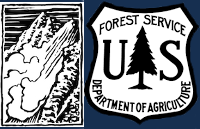22-23
From email: “These pics are from last June 10-11 (2022), after the pass reopened on Friday. I was skiing the Gardner headwall at 5:30, solo, when this monster released. Yah. The initial cornice collapse triggered and entrained a secondary slab of varying thickness whose crown is seen in one of the photos.”
Too cloose
Sent a couple emails to mtavalanche.com with pics of a R3.9D11 that just missed me by inches last year. Just a heads up about Cornices and slabs
From email: “These pics are from last June 10-11, after the pass reopened on Friday. I was skiing the Gardner headwall at 5:30, solo, when this monster released. Yah. The initial cornice collapse triggered and entrained a secondary slab of varying thickness whose crown is seen in one of the photos.”
Wet slab on Henderson Mtn.
Snowmobilers saw a recent wet slab on the northeast face of Henderson Mtn. on May 20, 2023. Video attached.
Within last 4 days (May 16-19), but uncertain of exact date of occurrence.
Wet Slab, Hollow Top Mtn.
Wet slab avalanche on Hollow Top Mtn., Tobacco Roots
ENE facing slope at 8,800’
Wet slab avalanche on Hollow Top Mtn., Tobacco Roots
ENE facing slope at 8,800’ Photo: S. Miller
Forecast link: GNFAC Avalanche Forecast for Tue May 2, 2023
Wet slab on Henderson Mtn.
Snowmobilers saw a recent wet slab on the northeast face of Henderson Mtn. on May 20, 2023. Video attached.
Wet Slab, Hollow Top Mtn.
Wet slab avalanche on Hollow Top Mtn., Tobacco Roots
ENE facing slope at 8,800’
Wet slab activity near Cooke
On May 14 and 15 we saw crowns and debris of wet slabs that ran naturally over the past couple weeks.
Scotch Bonnet, S aspect, 9800'; Sheep Mtn. SW aspect, 9800'; Crown Butte, SE aspect, 10000'.
Hard to say exactly when they all occurred. The slides on Scotch Bonnet and Sheep appeared slightly fresher, but could have been a week old.
